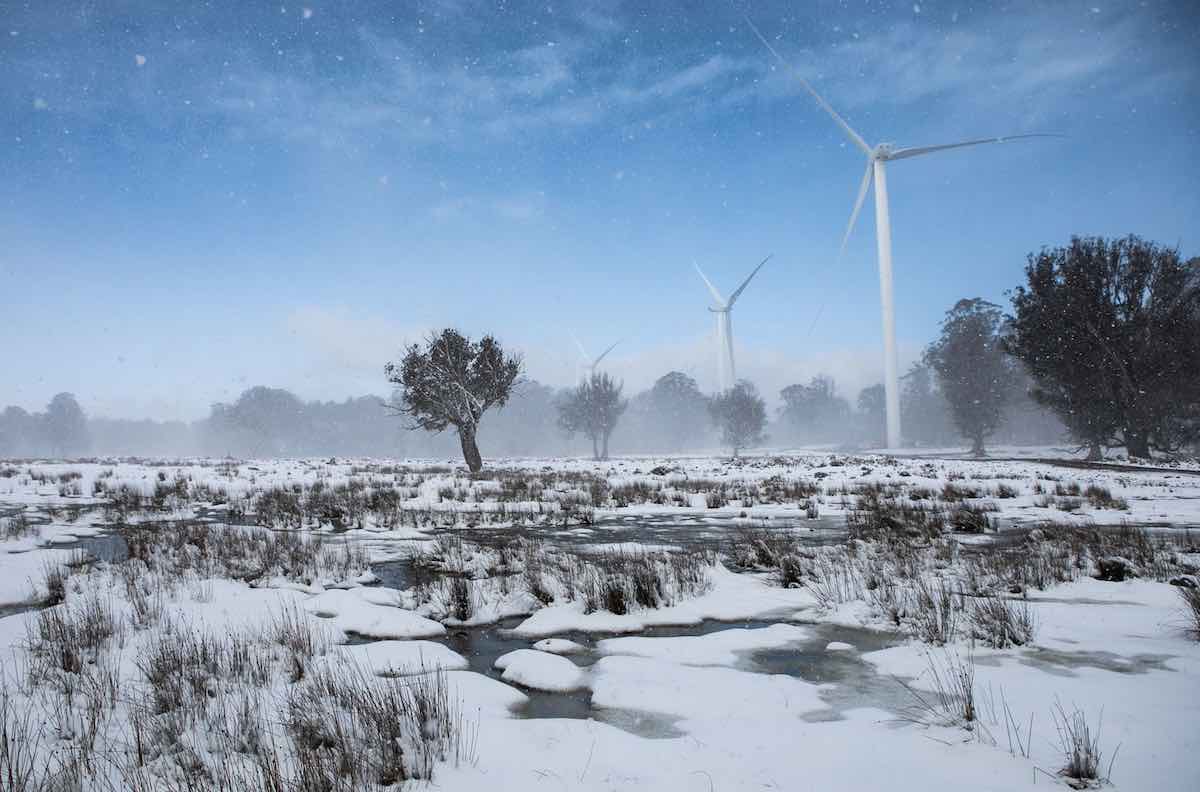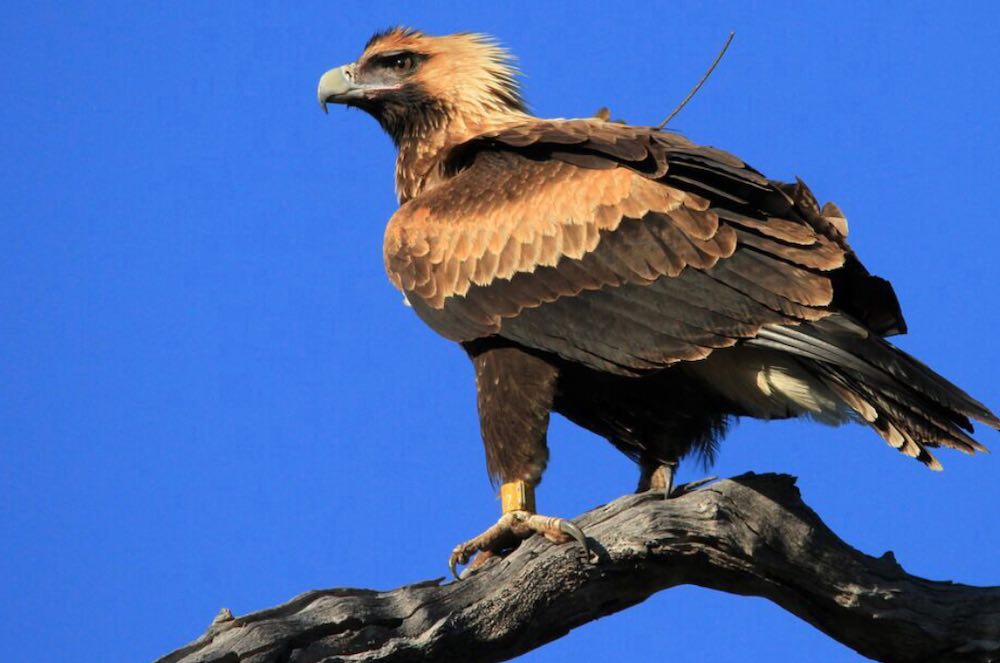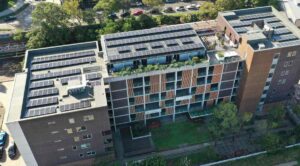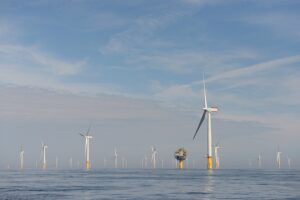As Tasmania enters a new phase of wind farm development that will test the bounds of social licence and environmental stewardship, one of the state’s largest wind farms has been making key progress on one of the industry’s most divisive issues: turbine-related bird deaths.
The 144MW Cattle Hill wind farm, owned by Power China Group and Goldwind Capital Australia, was formally launched in Tasmania’s Central Highlands in late 2019, and started sending power to the grid in early 2020.
The project is also nearly a year into an 18-month Australia-first trial of an aerial monitoring and detection system, called IndentiFlight, designed to mitigate the wind farm’s impact on the endangered Tasmanian wedge-tailed eagle. It is already winning awards, including the Clean Energy Council’s Innovation Award for 2021.
The technology uses tower-mounted optical units – 16 of them are spread out across the wind farm – to detect flying objects, and then algorithms to identify them as eagles.
If an eagle’s speed and flight trajectory puts it on a collision path with a turbine, the system then sends a signal to shut that turbine down.
So far, the technology has proven highly successful in protecting the local population of “Wedgies,” with just one mortality due to a turbine collision identified during the initial commissioning of the IdentiFlight system.
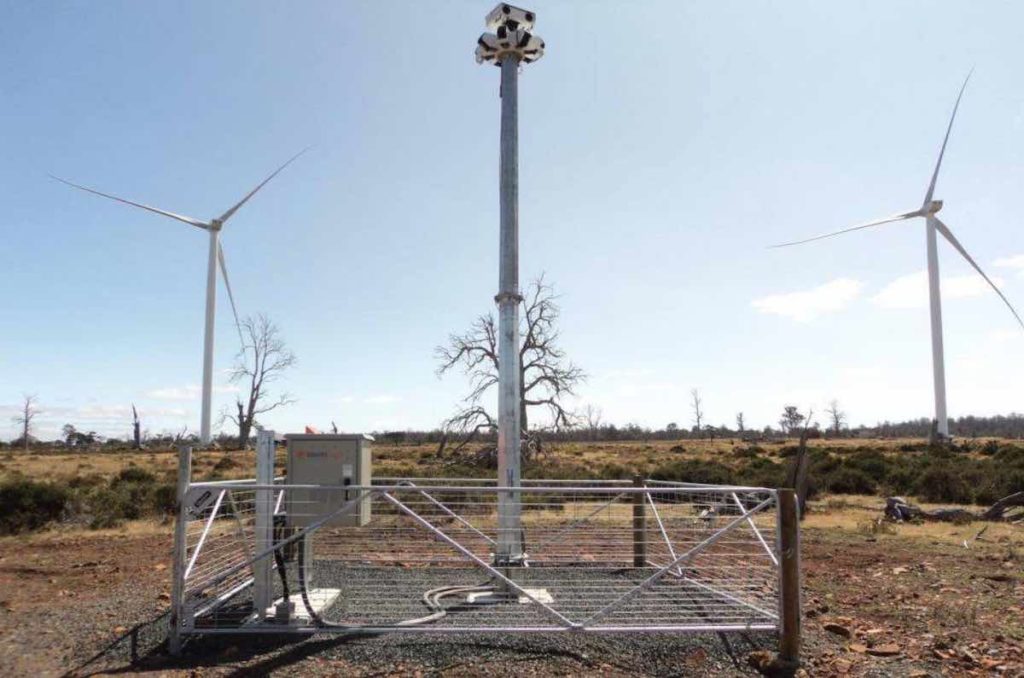
Goldwind says a comprehensive investigation into that initial bird death found it was most likely the result of human error, via an “inadvertent overriding” of the IdentiFlight system. Corrective and preventative actions have since been implemented to remove this risk.
“Besides that incident, there have been no Tasmanian wedge-tailed eagle or white-bellied sea eagle impacts recorded at Cattle Hill since the first turbine was turned on in November 2019,” a spokesperson told RenewEconomy.
“We consider that IdentiFlight has played a significant role in mitigating the risk to eagles to date.” The technology has even won the Clean Energy Council’s Innovation Award for 2021.
Death and injury caused to birds by wind farms is a common complaint against the technology, although solid figures on this – in particular, in comparison to other energy technologies – are not easy to come by.
A 2017 article by Simon Chapman, published in The Conversation, noted that while wind turbine blades do indeed kill birds and bats, studies show their contribution to total bird deaths is extremely low – and the focus on them as bird killers disproportionate to other far more damaging energy generation technologies.
Chapman cited a 2009 study using US and European data on bird deaths that compared estimations of the number of birds killed per unit of power generated by wind, fossil fuel and nuclear power systems. Essentially, the study found that for every one bird killed by a wind turbine, nuclear and fossil fuel powered plants killed 2,118.
A Canadian study in 2013 came to a similar conclusion, with wind turbines not even making the list of the top 10 biggest bird killers nationally, where power line collisions and electrocutions ranked second, and collisions with houses and buildings ranked third.
Nevertheless, in certain spots considered perfect for wind farms, concessions must be made for local populations of bird species, particularly those that need to be protected. And in Tasmania, the preservation of the wedge-tailed eagle is of particular concern.
In 2019, the UPC/AC Renewables’ Robbins Island wind farm, which proposes to construct 340MW worth of wind turbines in Tasmania’s north-west, was met with unexpected opposition from former Australian Greens leader Bob Brown, who specifically cited the project’s potential impact on wedge-tailed eagle populations as a reason for his objections.
For Goldwind, a key condition of the Cattle Hill project’s approval hedged on protection of the local population of Tasmanian “Wedgies,” a sub-species of the wedge-tailed eagle known to nest in the area of the wind farm and which is listed as endangered in the state.
As part of the project’s planning permit conditions, an allowance was made for five eagle mortalities in its first year of operation, but Leigh Walters, Goldwind’s project director said that from the outset, the team’s firm goal was for zero harm.
This has more or less been achieved, which is a huge point of pride for Walters and his team, but it has been an enormous – and costly – undertaking.
The team is also in the process of working out what the eagle activity and turbine shutdowns, or curtailments, will mean to the overall productivity of the wind farm – and how to fine-tune the system to maximise eagle safety while minimising turbine down-time.
“On average, we’re seeing about 400 curtailment signals sent to a turbine daily within the wind farm, with each shutdown averaging slightly more than two minutes, or about 14.5 hours daily on average across the 48 turbines,” Walters told RE.
“Obviously there’s periods of heightened activity with eagles. And we also found early in the system commissioning that we had a lot more curtailment because … (at the start of the trial) we had quite a wide (radius for eagle detection)… in order to be conservative with the system.
“Part of tuning of the system is to bring in that radius, a little bit tighter, and also to have a quicker release of the curtailment signal, whilst maintaining a protective strategy.”
Meanwhile, the Cattle Hill IdentiFlight system is chalking up masses of valuable data on eagle behaviour around wind farms and how birds and turbines might be able to exist in greater harmony in a future of 100 per cent renewables.
“So the system has taken, so far, over three million eagle images,” Walters said. “So there’s a massive amount of data, with 130,194 eagle flight paths are being tracked.
“What we’re finding with this system… is we’re getting amazing data which can then be used for both conservation and planning… and we’ll learn a lot more about what eagles do and how they behave, which, you know, we’re hoping will really underpin part of the protection tools and policies for these as a threatened species.”
On the wind energy generation side, the team is getting a good understanding that the eagles don’t fly at night, which translates to a lower risk of curtailment at night, when the wind tends to blow more consistently.
“So if you’ve got a wind farm that’s generating mostly with the wind at night, then curtailment is going to be a lot less than one that operates [mostly] during the day,” Walters said.
“It’s a pretty good news story to say it works so far and I can see there’s probably going to be a broader adoption of these types of technologies and, from an industry point of view, hopefully that will help projects get approved and supported, particularly in Tasmania.
“From a conceptual point of view, it is paving a better collaborative relationship between the regulators and industry in terms of what can we do from an ecologically sustainable development perspective to get these [projects] into implementation.
“We’ve actually introduced something that is making a positive difference, and not just relying on the eagles avoiding the turbines, I suppose, or having a license to cause harm. I think that’s pretty cool and we have had a lot of support from industry, government departments and the community.
“It is great to be actually investing in something that is making a difference, despite spending significant costs on doing it, while adding significant value beyond the consent conditions.
“From a development perspective, yes, it’s money, but it’s not a huge percentage of the total costs … and [gaining social licence] and being transparent and open about it is just good industry and corporate behaviour.”

